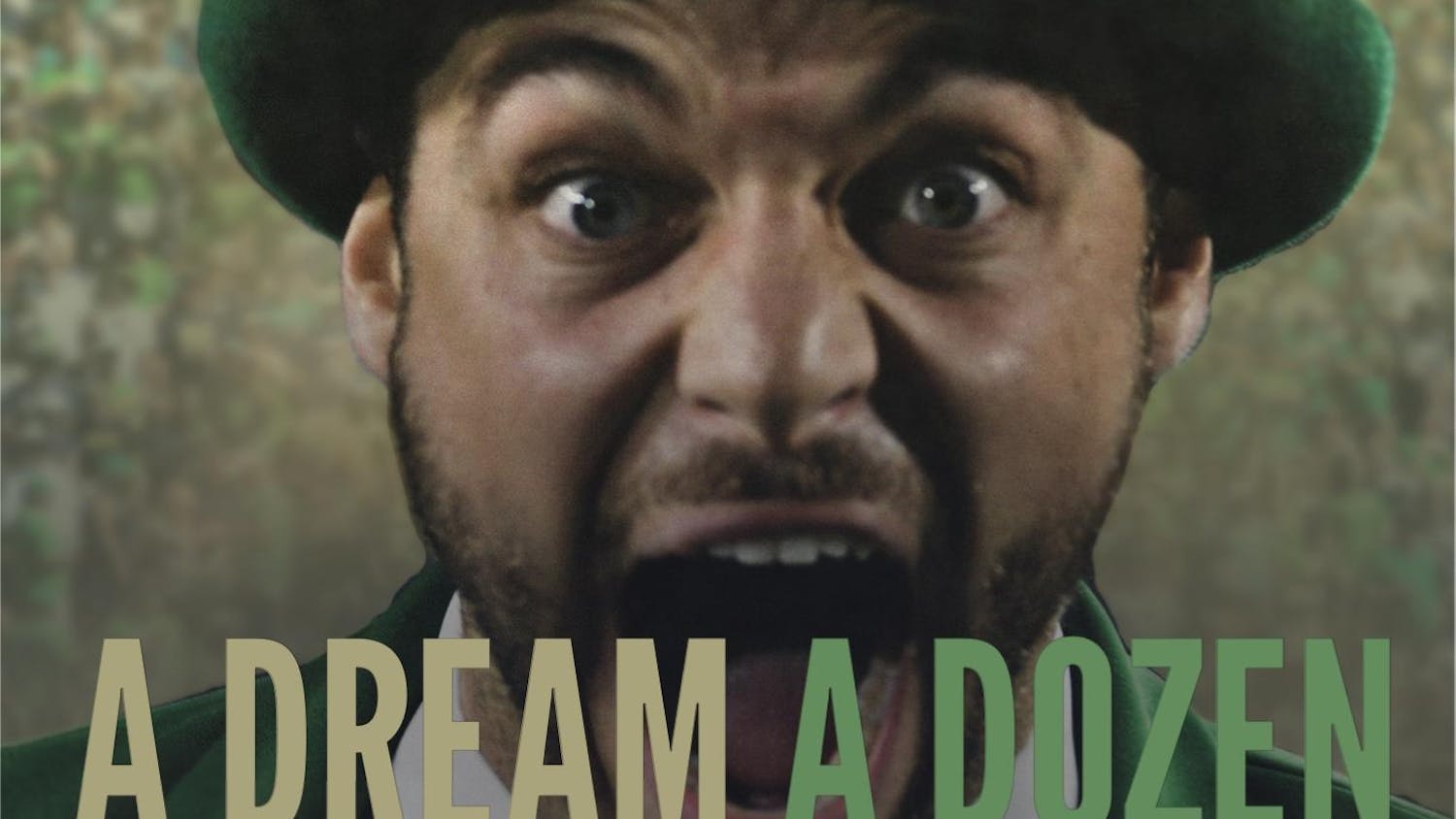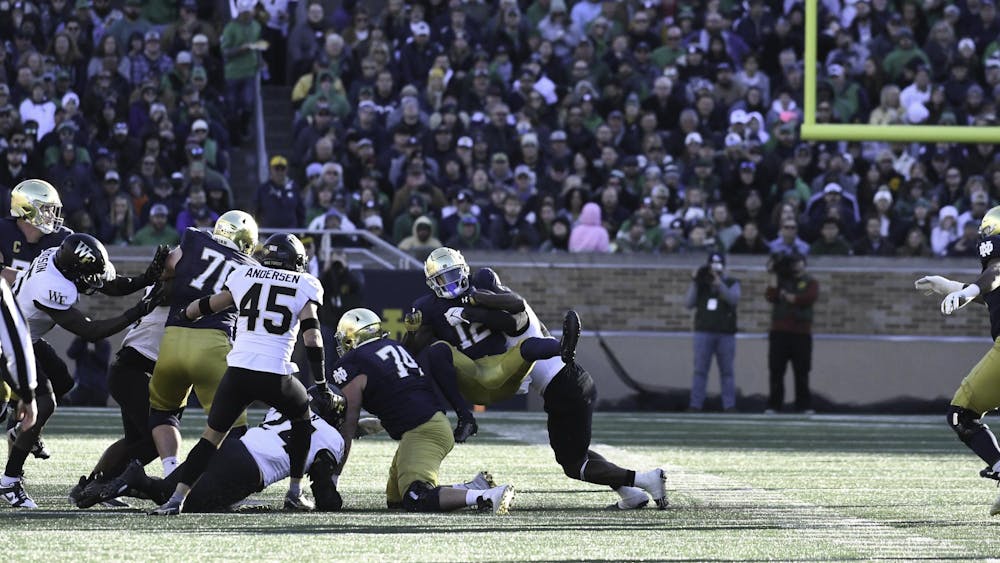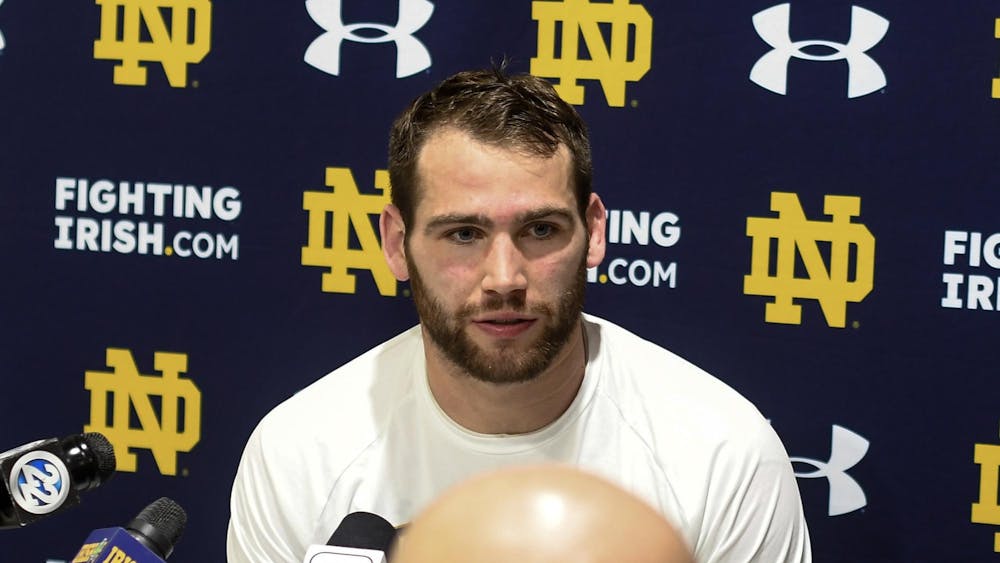Social media is changing the way the world communicates, and college football is far from immune to the revolution.
That’s the lesson Notre Dame learned as it worked to play catchup over the last couple seasons since recruiting coordinator and linebackers coach Mike Elston took over.
“We’ve dumped a ton of resources into [recruiting],” Elston said at Notre Dame’s media day on Aug. 17. “I think it’s been a priority for us from the moment Coach Kelly asked me to take over the recruiting. It was the number one objective. We have a brand, and we want to get our brand out there.”
Notre Dame is far from the only program revamping how it uses social media in to attract and connect with recruits. According to Blue and Gold Illustrated analyst Bryan Driskell, the evolution of social media has changed that game nationwide.
“What you have now are more opportunities for coaches to interact with players,” Driskell said Wednesday. “There’s less restrictions on [direct-messaging] kids. Now coaches can literally tweet at kids. They can sub-tweet and retweet kids. So you’re obviously seeing more coach interaction with players sort of through that venue, and it’s more constant.”
“The [Notre Dame] coaches have done a better job interacting on social media with players, whether it’s either a direct message or now being able to follow them and favorite and like what they’re doing,” Elston said. “So social media’s huge in college football.”
Elston added that for Notre Dame, the first step was to expand the amount of resources put in to managing the program’s social media accounts. This started by adding new positions like a full-time social media coordinator and a full-time graphic design coordinator, two positions that were originally one.
“A year ago we had one guy that did both, and he was overworked. He didn’t have time to do, in my opinion, great quality at both of them,” Elston said. “So when we made two positions, we hired Laura [Thomas] as the social media director, and then we hired Grant Apgar who’s done a fantastic job with graphic design. So he runs that, she runs the social media, and they can pour all their energy into that one phase of it.”
Driskell agreed, saying the sheer volume of interactions on social media has been the largest difference he’s seen in Notre Dame’s approach to social media recruiting over the last couple years.
Elston also commented on how the increased staff in the social media office have allowed Notre Dame to customize recruit visits to fit their likes and interests.
“It’s more of an analytical piece now where if a kid’s tweeting this, what’s his interest?” Elston said. “Ok, well he likes Jay-Z, so when he comes to campus what can we do cool with Jay-Z? So it’s just little things like that that before we never even messed with.”
Driskell added that using Twitter to spread the Notre Dame brand is far more efficient, and less costly, than the old mailing system the Irish used until a couple years ago.
“You send something out and you got a kid that you’re looking at and he retweets it, and he’s going to be friends with a bunch of top-ranked recruits, and they’re going to see it,” Driskell said. “So I think that helps give you a little bit more exposure and seems to be a little bit more relevant with younger people.”
Last year Notre Dame partnered with Showtime to film “A Season with Notre Dame Football.” While the show was a hit with Irish fans across the country, Driskell said it barely scratched the surface with recruits, whereas Notre Dame’s partnership with Bleacher Report this year will be much more effective at reaching high-school aged prospects.
“I think [Bleacher Report] is going to have a far greater impact [than Showtime],” Driskell said. “Elston made the comment that only 10 percent of the recruits they polled had ever watched the show. You’ve got to be real intentional with watching the show. First you have to have a cable package that gets you Showtime, which a lot of recruits don’t have. And then you’ve got to be real intentional about it.
“Whereas, if I’m the top quarterback recruit and [I follow] a bunch of guys on Twitter, I don’t necessarily have to be intentional to see the Bleacher Report stuff that they’re putting on social media. So if one of my buddies tweets this out, I’m going to hit play.”
As all social media users know, however, people can see everything you post on social media, even the unimpressive material. This is true for recruits looking at schools and coaches, but also for coaches looking at recruits.
“Social media has allowed coaches to really get a better feel for their [recruits] and how they are from a character standpoint,” Driskell said. “A lot of times kids unknowingly reveal things about themselves on social media that they would never do in an interaction with a coach when you’re trying to put your best foot forward.
“If you’re a ‘Yes sir, no sir’ kind of kid to the coach, but then you’re on Twitter sort of being disparaging towards females or being crude or saying things, that can give a coach a little bit of a clue that, ‘You know what? I need to do some digging into this [recruit’s] background.’
“And there’s flat-out been kids who’ve had their offers pulled because of how they are on Twitter.”
Still though, Driskell said overall the shifting landscape of college recruiting has provided both coaches and players to develop deeper relationships with each other which benefit both sides on the whole.
“ … When it gets down to it, end of the day the most important thing is not that Mike Sanford puts out cool tweets, it’s that Mike Sanford behind the scenes is talking to this kid. … That [the recruit thinks], ‘These guys are going to look out for me. They’re going to develop me as a person, develop me as a football player and give me an opportunity to be highly successful on and off the field.’”













